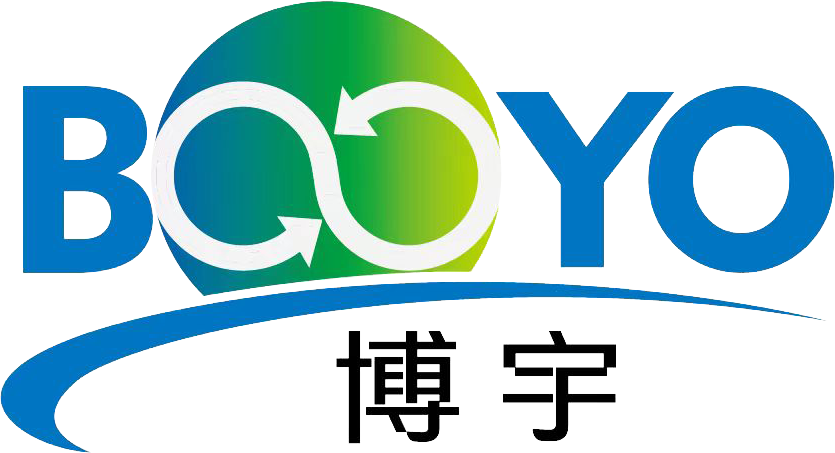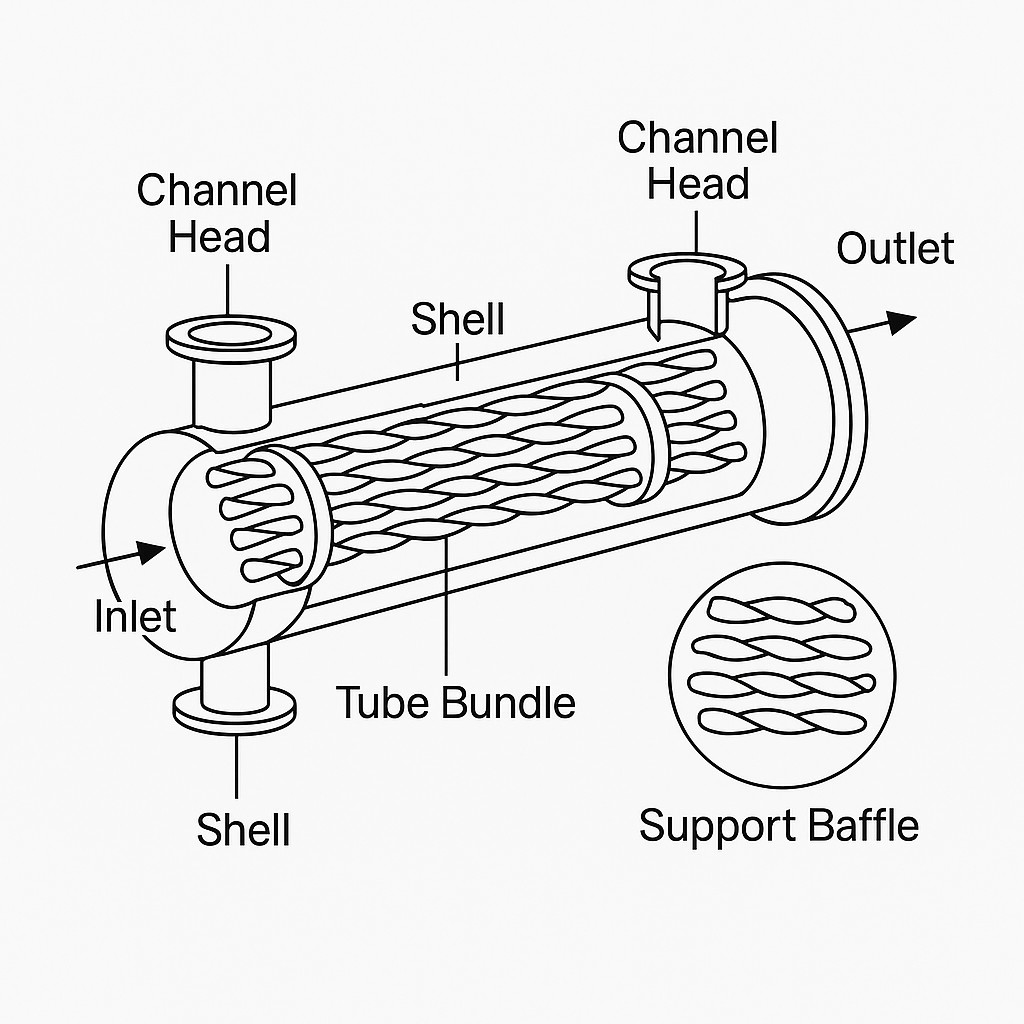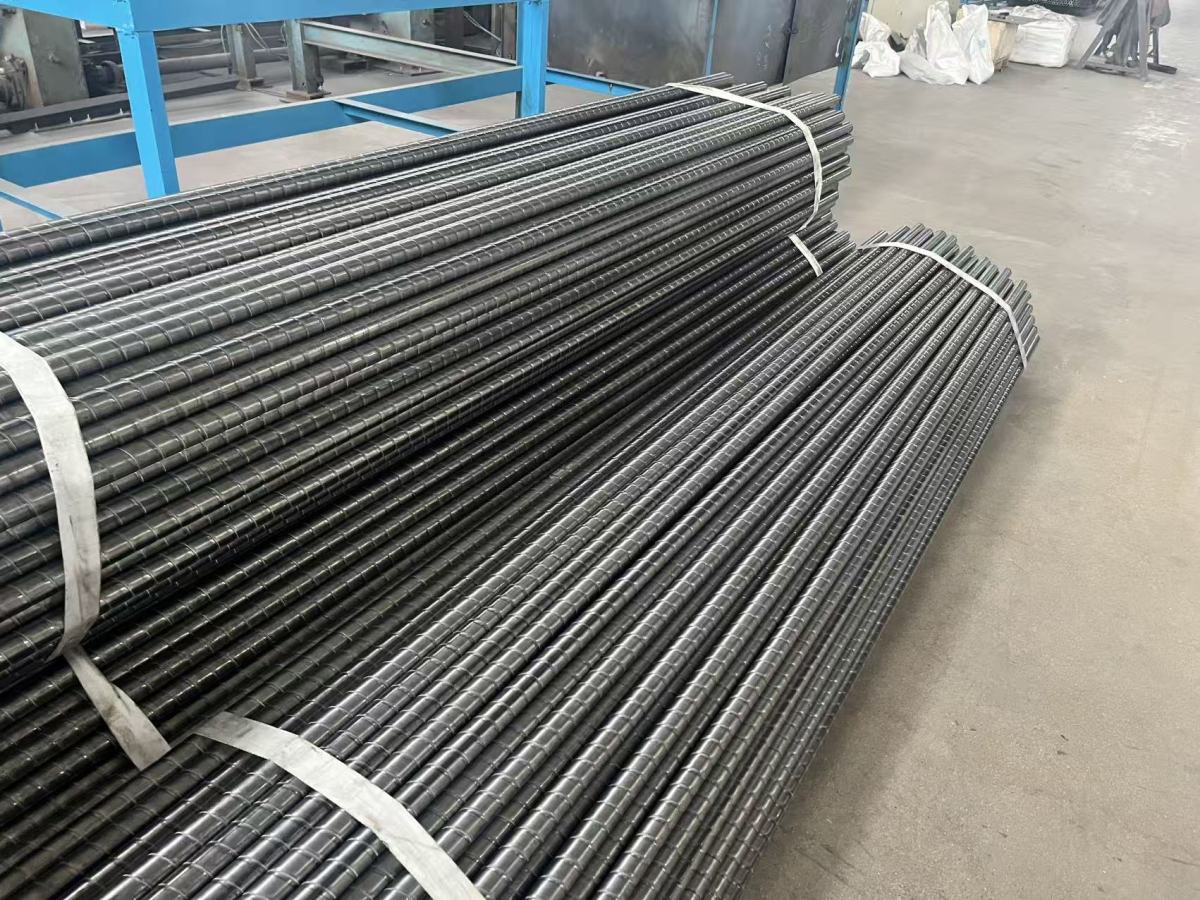
Our News
Find out about our latest news here.
Latest News
- ▶ Anti-Bribery and Corruption (ABC) Compliance Policy
- ▶ The Critical Role and Application of Heat Exchangers in the Natural Gas Treating Process
- ▶ Employee Code of Conduct
- ▶ Helical Baffle Heat Exchanger: Working Principles, Advantages and Industrial Applications
- ▶ Fraud Prevention & Anti-Fraud Policy
- ▶ Moments from Boyu International Trading Team at ADIPEC Abu Dhabi
Message

Introduction
Shell-and-tube heat exchangers are the most widely applied type of heat transfer equipment in petrochemical, metallurgy, power generation, and chemical industries. Their advantages include robust structure, flexible design, and proven reliability. However, the traditional straight-tube design has limitations in terms of fouling resistance, pressure drop, and overall heat transfer efficiency.
To overcome these challenges, engineers have developed several solutions to enhance the performance of shell-and-tube exchangers, in addition to twisted tube technology.
1. Enhanced Tube Surfaces
Concept: Using tubes with special surface geometry—such as finned tubes, corrugated tubes, or internally ribbed tubes—significantly increases the heat transfer area and turbulence inside the tubes.
Advantages:
Higher overall heat transfer coefficient.
More compact equipment design.

Limitations:
More complex manufacturing process.
Difficulties in mechanical or chemical cleaning.
2. Helical Baffle Design
Concept: Replacing traditional segmental baffles with helical baffles guides shell-side fluid in a spiral flow pattern.
Advantages:
More uniform fluid distribution.
Reduced dead zones and fouling tendency.
Lower shell-side pressure drop compared with segmental baffles.
Limitations:
Higher design and fabrication complexity.
Initial investment cost is higher.
3. Turbulence Promoters (Tube Inserts)
Concept: Installing twisted tapes, metal strips, or wire coils inside the tubes generates turbulence and enhances mixing.
Advantages:
Significant increase in convective heat transfer coefficient.
Compact design possible for high-performance duties.
Limitations:
Increased pressure drop on the tube side.
Potential difficulties in tube-side cleaning.
4. Operational Optimization
Concept: Beyond structural improvements, proper operation and maintenance can also sustain higher heat transfer efficiency.
Typical Measures:
Maintain optimal flow velocity to ensure turbulence.
Apply anti-fouling treatments or chemical dosing.
Conduct regular cleaning to minimize fouling resistance.
Advantages:
Low cost and easily applicable to existing exchangers.
Limitations:
Efficiency depends heavily on operation discipline and maintenance frequency.
Comparative Summary
Conclusion
While twisted tube exchangers represent one of the most effective modern solutions for improving heat transfer efficiency, other approaches such as enhanced tube surfaces, helical baffle design, turbulence promoters, and operational optimization also play critical roles. Selecting the appropriate solution requires balancing heat transfer performance, fouling resistance, pressure drop, maintenance feasibility, and cost.
In practice, a combination of structural design improvements and operational strategies often delivers the most reliable and cost-effective results.
PROFESSIONAL CONSULTATION
If you are interested in our products and want to know more details, please leave a message here, we will reply you as soon as we can.